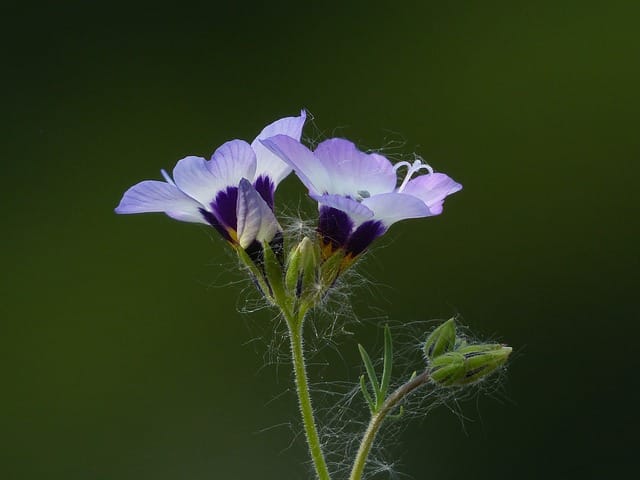How to grow Jacob's Ladders
The Jacob's Ladders flower, also known as Polemonium, is a beautiful perennial plant that belongs to the phlox family

In this article:
- Introduction to Jacob's Ladders Flower
- Choosing the Right Location
- Understanding Soil and Water Requirements
- Propagation Methods
- Planting Jacob's Ladders from Seeds
- Caring for Your Jacob's Ladders
- Pruning and Training Techniques
- Dealing with Pests and Diseases
- Common Varieties of Jacob's Ladders
- Using Jacob's Ladders in Garden Design
- Frequently Asked Questions (FAQs)
- Conclusion and Final Tips
Introduction to Jacob's Ladders Flower
The Jacob's Ladders flower, also known as Polemonium, is a beautiful perennial plant that belongs to the phlox family. It is known for its delicate, nodding flowers and attractive foliage. This article will guide you through the process of growing and caring for Jacob's Ladders in your garden.
Choosing the Right Location
In order to thrive, Jacob's Ladders need a partially shaded or lightly dappled area. Avoid planting them in full sun, as this can lead to scorching of the leaves. It's best to choose a location where they will receive morning sun and afternoon shade.
Understanding Soil and Water Requirements
Jacob's Ladders prefer moist, well-draining soil. Before planting, make sure the soil is rich in organic matter and has good drainage. Water the plant regularly, especially during hot and dry periods, to keep the soil consistently moist. However, avoid overwatering, as it can lead to root rot.
Propagation Methods
There are two main methods of propagating Jacob's Ladders - through seeds and division. Division is the most common and easiest method. This is typically done in early spring or fall when the plant is dormant. Carefully dig up the plant, divide the root clump into smaller sections, and replant them in prepared soil.
Planting Jacob's Ladders from Seeds
If you choose to grow Jacob's Ladders from seeds, collect the seeds after the flowers have faded and the seed capsules have dried. Sow the seeds in a seed tray filled with potting mix, lightly cover them with soil, and keep the tray in a warm and bright location. Transplant the seedlings into individual containers once they have developed several true leaves, and then plant them in the garden after the last frost date.
Caring for Your Jacob's Ladders
Once established, Jacob's Ladders require minimal care. Regularly water the plants to keep the soil moist, but not soggy. Mulching around the plants will help retain moisture and suppress weed growth. Apply a balanced slow-release fertilizer in early spring to promote healthy growth.
Pruning and Training Techniques
Jacob's Ladders benefit from occasional pruning to maintain their shape and promote bushier growth. Trim back any dead or damaged foliage throughout the growing season. After the plant has finished blooming, you can cut it back to encourage a fresh flush of growth.
Dealing with Pests and Diseases
Jacob's Ladders are generally resistant to most pests and diseases. However, they can occasionally be affected by powdery mildew or slugs. To prevent powdery mildew, ensure good air circulation around the plants and avoid overhead watering. To control slugs, use organic slug baits or create physical barriers around the plants.
Common Varieties of Jacob's Ladders
Common varieties of Jacob's Ladders include Polemonium caeruleum, Polemonium reptans, and Polemonium boreale. Each variety varies in flower color, size, and foliage characteristics. Research and choose the variety that suits your garden and preferences.
Using Jacob's Ladders in Garden Design
Jacob's Ladders can add charm and elegance to any garden. They work well as border plants, edging, or used in mixed perennial beds. Their delicate flowers and fern-like foliage provide a soft and romantic feel to any garden design. Combine them with other shade-loving plants for a stunning display.
Frequently Asked Questions (FAQs)
Q: Can Jacob's Ladders tolerate full sun?
A: No, Jacob's Ladders prefer partial shade and can easily get burnt in full sun.
Q: How often should I water my Jacob's Ladders?
A: Water your Jacob's Ladders regularly to keep the soil evenly moist, especially during hot and dry periods.
Q: How tall do Jacob's Ladders grow?
A: Depending on the variety, Jacob's Ladders can grow between 1 and 3 feet in height.
Conclusion and Final Tips
With their delicate flowers and lush foliage, Jacob's Ladders can make a beautiful addition to any garden. By providing the right conditions and care, you can enjoy these charming perennials year after year. Remember to choose a suitable location, prepare the soil, and water them regularly. Don't forget to prune and divide the plants when needed, and watch out for any pests or diseases. With a little effort, you can create a stunning display of Jacob's Ladders in your garden.
